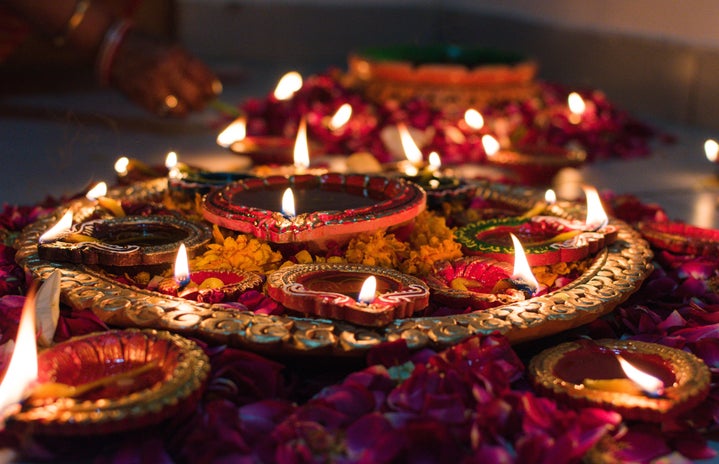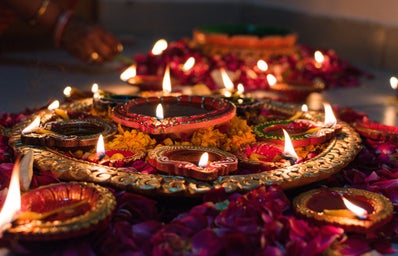Diwali, otherwise known as the Festival of Lights, is celebrated by Hindu’s all across the world, and this year, celebrations will take place on October 31st, making both of my favourite holidays on one day!
The story behind Diwali signifies the victory of light over darkness and good over evil. There are many different Diwali stories, but the most popular one remains the story of Lord Rama, his wife Sita, and Lakshman. Diwali marks the day when Rama, Sita, and Laskhman return to their homeland, Ayodhya, after a 14 year exile and a victory over the evil King Ravana. Upon their return, they found their village lit up with hundreds of diyas, little clay lamps, as a way to mark their victory! The Goddess Lakshmi is also worshipped on this day by Hindus as a way to seek blessings and prosperity.
Today, diya’s are widely used in Diwali celebrations, as those who are celebrating will light them and place them around various parts of their home; but, diya’s are not the only way to celebrate!
Creating a rangoli on the floor of the front entrance of your home is a tradition that many do to mark the start of the Diwali festivities. A rangoli can be made with many different materials, such as dyed rice, wheat flour, colored sand, flowers, and many other materials. The designs can vary as well, most commonly using geometric shapes, floral patterns, and in more complicated designs, motifs of Hinduism, such as lotus flowers, peacocks, and the “Om” symbol. Many create these beautiful designs by hand, but personally I like to use a stencil as a little hack to get the perfect rangoli for my front porch!
Other than decorative purposes, the rangoli is created to bring good luck and wealth into the family’s home, and to welcome Goddess Lakshmi, the Goddess of wealth and prosperity, into the home to bless the family.
Of course, any festival is incomplete without mouthwatering food to commemorate the joyousness of the day! Diwali is no stranger to good food, and there are many food traditions that vary from family to family.
For my family, we typically eat a big lunch consisting of aloo tikki, which is a fried potato patty, and is topped with yogurt, shredded carrots, tamarind and mint chutneys, as well as other toppings based on personal preference. Other appetizers include pakoras, which are fritters made of various vegetables.
The most important food (and my favourite) for Diwali is the mithai, or the sweets! The day before and the day of Diwali, sweet shops across the GTA are packed with people, carefully selecting what sweets they’re going to bring home to enjoy with their families, and which sweets to exchange with their extended families and loved ones. If you have a sweet tooth and want to try Indian sweets but don’t know where to start, I highly recommend trying gulab jamuns, jalebi, and kaju katli!
After the Diwali prayers are completed, families and friends gather to light fireworks, once again celebrating Lord Rama’s victory over Ravana as a fun way to end the night! Most families celebrating at home just celebrate with sparklers, but if you find yourself close to a Hindu temple on Diwali, you might just catch a beautiful fireworks show!
Happy Diwali to everyone celebrating; have a fun, safe, and loving day whilst celebrating with your loved ones!





